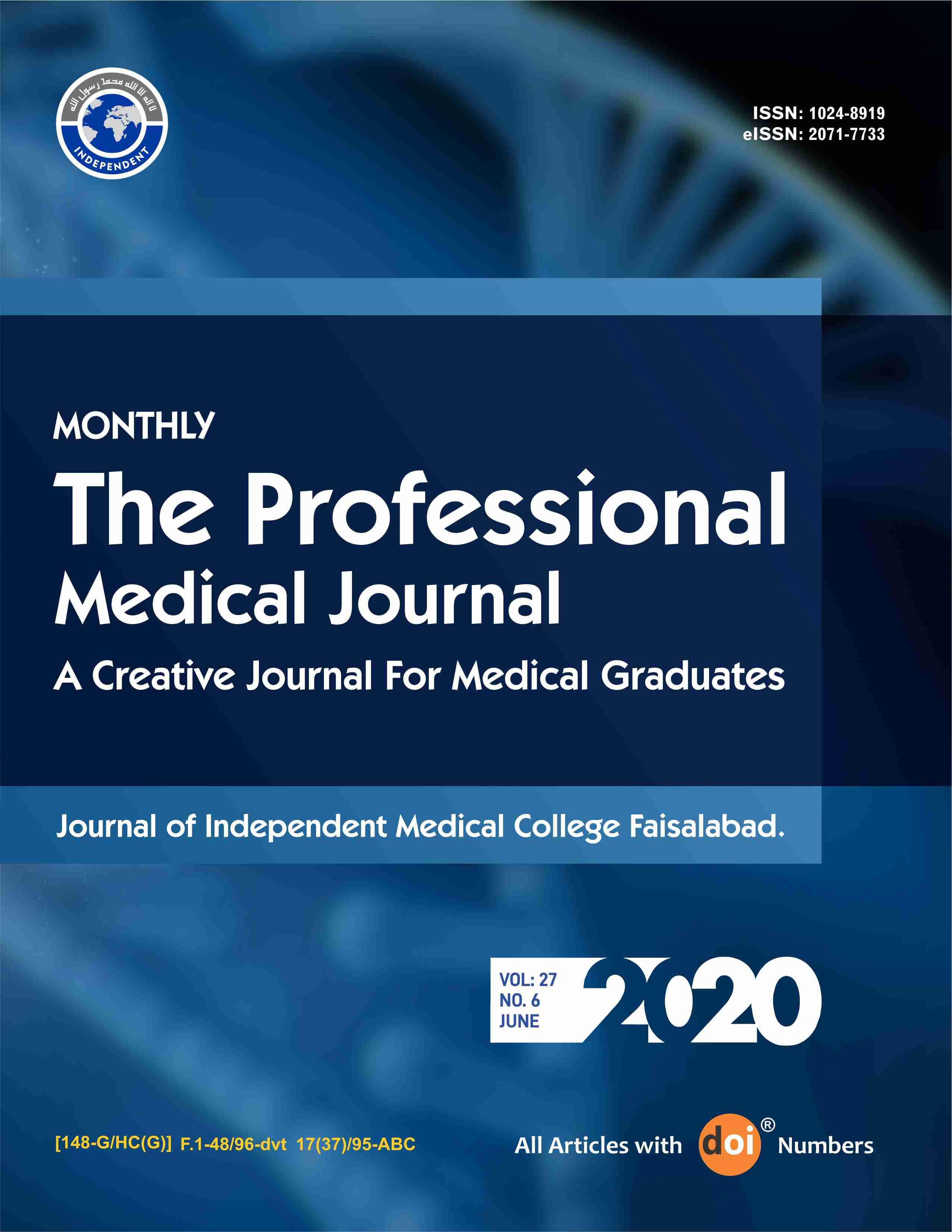Outcome of primary repair in typhoid ileal perforation at Tertiary Care Hospital.
DOI:
https://doi.org/10.29309/TPMJ/2020.27.06.3671Keywords:
Ileostomy, Morbidity and Mortality, Primary Repair, Typhoid Ileal PerforationAbstract
Typhoid ileal perforation is the common complication of typhoid fever in third week of its phase of progression. It is the most common cause of mortality in developing countries. Small perforations are dealt with primary repair and the more complicated disease is treated by multiple other options. Prognosis is good with primary repair with least postoperative complications. Objectives: To detect the outcome of typhoid ileal perforation treated by primary repair at tertiary care hospital. Study Design: Cross sectional study. Setting: Surgical Department of PMC Hospital Nawabshah. Period: From August 2017 to December 2018. Material & Methods: This study included total 70 patients. All patients were admitted from surgical OPD and emergency department of PMCH Nawabshah. Out of 70, 45 (64.28%) were females and 25 (35.71%) were male patients. Age ranged from 27 to 52 and 24 to 47 in females and males respectively. The common presentation was pain in whole abdomen along with distention and fever, vomiting. Plain X ray chest/ Abdomen and ultra sonography showed gas under diaphragm. Primary repair was done and also other surgical options but our study included only the postoperative outcomes of primary repair of typhoid ileal perforation. A few complications were detected after primary repair of the gut perforation. Results: Total 70 patients were included in this study. 45 (64.28%) were females and 25 (35.71%) were male patients. In females, 25 (55%) were found single perforations of less than 1cm whereas 7 (15.5%) had size of perforation less than 1.5 cm. In 25 males, 11 (44%) had single perforations of less than 1cm in size. 2 (8%) had < 1.5 cm size perforations and 12 (48%). Over all complication rate in this study was 26%. Conclusion: Primary repair is the best surgical option to treat typhoid ileal perforation in selected patients with least postoperative complications.


